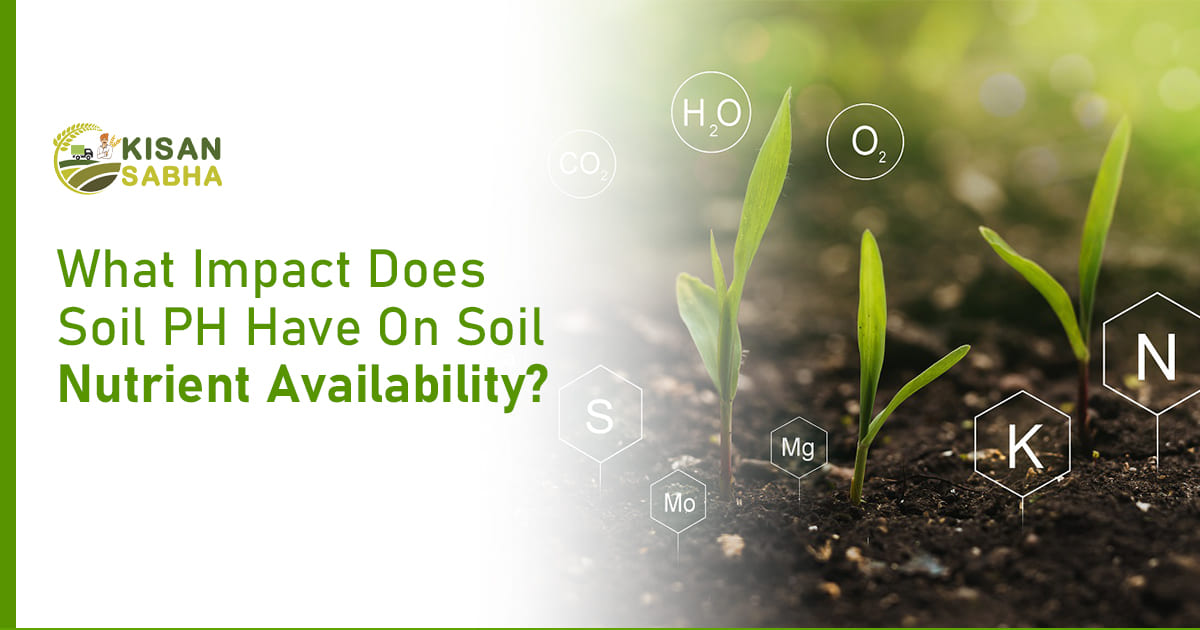The acidity or alkalinity of a soil is determined by its pH. pH 7.0 is neutral on the pH scale. Acidity is measured between 7.0 and 7.0, while basicness or alkalinity is measured above 7.0. The pH of the soil impacts the nutrients that plants can use to thrive. While calcium, phosphorus, and magnesium are less available to plants in very acidic soil, manganese and aluminum can become more available and poisonous to them. Phosphorus and the majority of micronutrients are less accessible in very alkaline soil.
It is beneficial to evaluate the soil pH while creating or establishing a new garden or landscape since different plants require different ranges of soil pH. A pH measurement can show whether the soil is acceptable for the plants to be grown or whether it has to be modified to promote the best possible plant growth.
What is the soil pH?
The term “soil pH” often refers to how acidic or alkaline the soil is.
Additionally, chemists define pH as the log10 concentration of hydrogen ions (H+) in the soil solution. The pH scale ranges from 0 to 14, with 7 representing neutral conditions. A solution is classified as basic or alkaline if its pH value is greater than 7, and acidic if it is lower.
Also, understanding the pH scale’s logarithmic nature reveals how even a small change of a few pH units can drastically affect the chemical environment and disrupt delicate biological processes.
What Affects the Soil pH?
There isn’t a straightforward method for calculating soil pH; several factors, such as the following, can make your soil acidic or basic:
Rain:- Rainwater “leaches” away” (or “washes”) some basic nutrients, such as calcium and magnesium, leaving behind more acidic nutrients, including aluminum and iron. This means that locations with higher annual precipitation typically have more acidic soils, and areas with less annual precipitation typically have more alkaline soils.
Parental Guidance:- The substance that originally formed the soil or its parent material, had a significant impact on the pH of the soil. Soil that develops from alkaline rocks will, for example, be more alkaline than soil that develops from acidic rocks.
Fertilizers:- Since the majority of nitrogen fertilizers and manures are acidic, using too much nitrogen might damage your plants’ roots. Furthermore, the yearly incorporation of fertilizer into soil likely increases its acidity compared to unmixed soil.
Sort of soil:- The texture of the soil, which can range from sand-like to clay-like, affects how quickly or how slowly it will react to pH changes. Due to their lower organic content and greater likelihood of water infiltration, sandy soils are more likely to become acidic. Due to their strong buffering capacity and high organic matter content, clay soils are more resistant to pH shifts.
Also Read:- What Is Protected Farming: Its Benefits And Drawbacks
Effect of pH on the Availability of Nutrients
Plants can absorb nitrogen in the form of nitrate (N03-) or ammonium (NH4+). The most common form of N uptake by annual crops is nitrate. However, the microbial conversion of NH4+ to N03- (the nitrification process) is quick at a soil pH range of six to eight.
Acidic soils (pH less than six) slow the nitrification process, reduce microbial activity, and may give a modest advantage to plants that can take up NH4+, like canola.
Losses of N due to volatilization might be influenced by soil pH. Ammonium and ammonia gas (NH3) coexist in balance in the soil solution. Therefore, the pH is a major determinant of the equilibrium. There is one H+ ion between NH3 and NH4+.
The pH impact is merely one aspect of volatilization. Other elements that influence volatilization include soil moisture, temperature, texture, and cation exchange capacity. The crucial thing to remember is that under low soil moisture or poor urea absorption circumstances, volatilization loss can be significant even at pH values as low as 5.5.
Conclusion
Soil pH plays a critical role in determining nutrient availability, influencing nutrient solubility, microbial activity, and plant uptake. Understanding the complex interplay between pH and nutrient availability is essential for optimizing soil fertility and promoting sustainable agricultural practices. However, by recognizing the specific pH requirements of crops and soils, farmers and agronomists can develop targeted strategies to improve soil health, reduce nutrient deficiencies, and enhance crop productivity





